As promised, I’m very proud to present my very good friend Dave Mauro, easily the best damn Brawl player out there period, and his long-awaited review. If there’s one guy who knows this game, inside and out, it’s definitely dmauro. So without further adieu…
________________________________________________________________________________
REVIEW: Super Smash Bros. Brawl
by Dave Mauro
The Super Smash Bros. Formula
The Super Smash Bros. series is a fighting game series for the layman. Unlike so many of its ilk, there isn?t a long list of character specific moves performed by describing thumb numbing shapes on the directional pad combined with one of several different power levels of kick or punch. Instead there are only two attack buttons: standard and special, which both vary in attack depending on which direction the analog stick is tilted. This simplicity makes for a series of games that are quick and easy for anyone to pick up.
Smash Bros. not only simplifies the traditional fighting game mechanics, it changes them up rather drastically. Rather than beating on an opponent until his health bar is empty, each attack will knock him around more and more until he is sent careening off the screen with a well timed smash attack. This mechanic allows for surprise comebacks from the brink of KO, as well as early KOs by cleverly guarding the edge, which tends to make the game much more exciting than the usual fight ?till you drop mechanic.
Super Smash Bros. further turns tradition on its head by allowing four players to battle at a time. Team up with friends against the computer, or have a chaotic free for all match. Throw in the option of randomly appearing items which can do anything from stun opponents to make players twice their normal size and now you?ve got something that?s more than just a fighting game.
But don?t let this simplicity fool you. The fact that the previous game in the series was one of the most popular tournament games on the Major League Gaming roster is testament to the fact that while these games make for great chaotic, ruled by chance party-games, there is a deep fighting system tucked within.
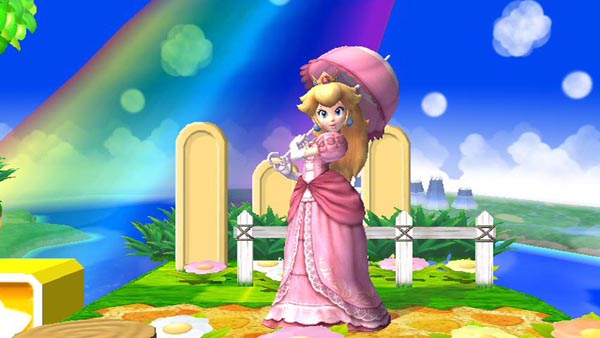
The cute veneer hides a surprisingly impressive fighting game
Some Essential Changes
A common misconception about Brawl is that it is the same as Melee but with additional characters. Well, certainly much from Melee has been retained: it has the same two-to-four player fighting game with most of the same mechanics; more than half of the roster is composed of characters from Melee; the auxiliary game modes are back with Home Run Contest, Multi-Man Challenge, Classic Mode, and others; and the collectible trophies have even returned. However, each of these aspects have been significantly changed and improved upon since Melee.
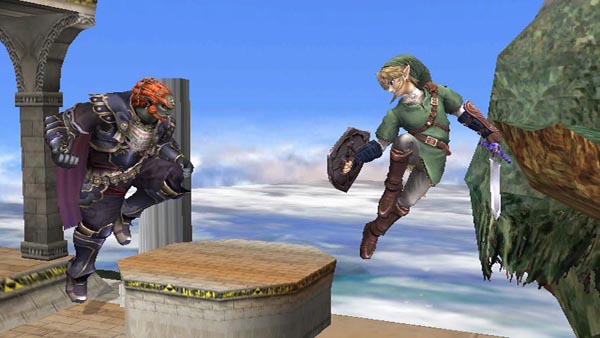
Classic battles are some of the most fun to set up and play with friends
The core mechanics have changed in several ways (warning: this paragraph is full of technical details). Most notably the mid-air dodge no longer dodges in a certain direction and instead simply dodges in place. This eliminates the popular advanced technique in Melee called wave dashing. The air dodge has increased defensive air options as it can now be used multiple times and can be followed by an attack. The next most notable change is that gravity has been reduced. There is still the option to fast fall by tapping down on the analog stick, but right away the game will feel very floaty and a little bit slower. The lower gravity also makes it more difficult to perform combos. The sweet-spot for grabbing edges has been increased in size so recovery is much easier in Brawl, and tether recoveries are now easier as well (although they will not work if someone is already hogging the edge). An input buffer has been added so that moves can be executed much more quickly without the need to time them to the precise frame at which they can be activated (most other fighting games use this). And of course there is tripping: every time a player dashes, they have an approximately 1% chance of tripping and leaving himself open for attack (the effect is the same as slipping on a banana peel). These are the most major changes to the core mechanics although there are plenty of more minor changes most players will never even recognize.
These are all changes that the people who have been playing Melee steadily and competitively for the last eight years either love or hate, with the exception of tripping, which is universally despised because it is a foolish blow to the competitive scene. It was a wise decision to remove some of the most popular advanced techniques of Melee though. This allows time for newcomers to familiarize themselves with the game before new Brawl specific advanced techniques are discovered and widen the gap between experienced and casual players. For the casual players these changes will seem insignificant when compared to what has been added to the game.
Essential Additions
While Melee had an impressive 26 playable characters, Brawl has a whopping 35. There are about 12 characters that play in entirely new ways (while Ike, Lucas, Wolf, and Toon Link are new and interesting, they are mostly based on existing characters), and many of the returning characters have been tweaked (some for better, Luigi; some for worse, Jigglypuff; and some unnecessarily, Samus). Characters such as Olimar and Snake add an unparalleled level of depth to the game simply by virtue of how differently they play. Many people argue for quality over quantity and that bigger is not better, but when all of the roster additions are fairly balanced and bring new and interesting mechanics to the game, it?s hard to argue that Brawl?s expanded roster is not the greatest aspect of the game.
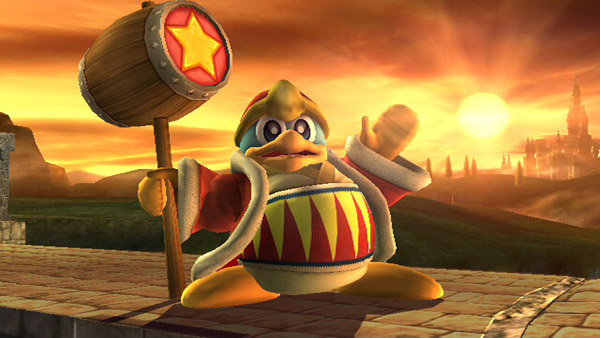
King Dedede combines the power of a heavyweight fighter with the recovery of a lightweight fighter
Of course they couldn?t make a new Super Smash Bros. game without new stages. The new stages are not as much of an upgrade as the new roster is, but some of them in particular stand out. There is a WarioWare, Inc. stage that forces the players to occasionally stop fighting to play a mini-game and have a chance at winning a starman, super mushroom, or a health boost; the Mario Bros. stage changes the fight to a mad dash to collect upturned turtles and crabs (they are extremely powerful projectiles); and there is a stage in which Pok?mon invert and flip the camera essentially causing everyone?s controls to reverse. Some of the stages drastically change how the game is played and others are simple variations of previous stages.
Final Destination and Battlefield remain intact, but not without drastically needed superficial renovations. Battlefield no longer looks like a cheesy VR battle room, and instead has been given a classical ruins theme to match the game?s new operatic opening score. Final Destination is no longer stuck out in space, but instead soars through the galaxy and above an ocean while a sunset provides a dramatic flair to accompany the music. Considering that these will be the two most often played levels, these updates were a fantastic idea.
Ten additional Melee levels return as well. These stages seem to be about three quarters of their previous size due to the fact that the Brawl character models are larger than their Melee counterparts. While I miss Pok? Floats, the broken but fun Hyrule Temple is back and much better now that it is slightly smaller.
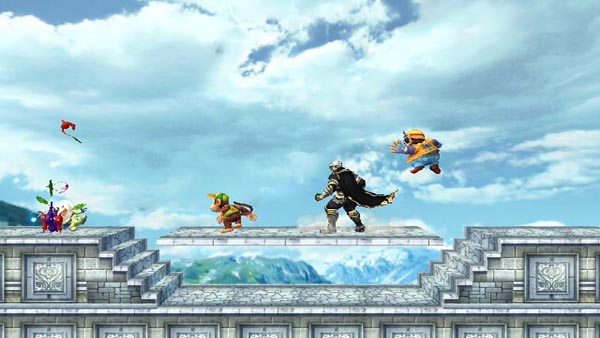
Keeping the custom stages simple but interesting is the best approach
The included stages are enough to satisfy any player, but Brawl introduces a stage editor which allows players to make anything from a ridiculous multi-tiered all ice and spikes stage to a simple variation of Battlefield in which the platforms have been inverted. It?s a little generic with only three themes to choose from, but since there is an option to choose any song from those collected, a lack of more themes will have to be forgiven.
I will quickly mention that new items have been added to the game as well. There is the eponymous Smash ball which is so rare and devastating that when one appears, the fight shifts focus as everyone tries to get their hands on it. There are also the Pok?ball inspired assist trophies which summon various Nintendo characters. Kirby?s Dragoon is a one-hit-kill weapon which must be assembled by collecting three pieces that usually end up being juggled from player to player until someone collects all three. There are also several more minor item additions, but these are the three that can significantly change the game when turned on. Including all three is a recipe for a chaotic match.
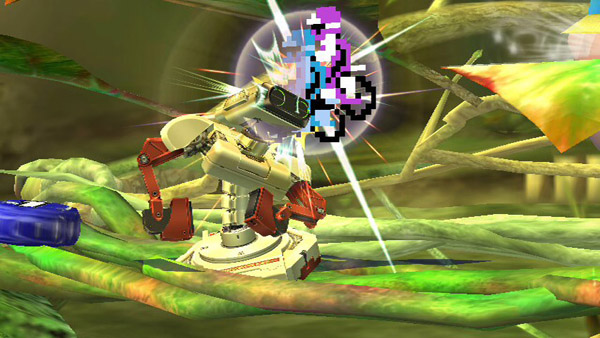
The new assist trophies help to rack up damage and KO opponents
Another great addition that Brawl brings to the series is online play. After players have honed their skills by practicing against the much improved level 9 CPU, they can play against friends and strangers online. There are a few different ways to play online: play against friends with your own settings (the game uses the standard friend code system unfortunately); play against strangers with only the option to play two minute item-on matches as teams or free for all; or spectate and bet coins on other players? matches.
While this all sounds great, there are many problems in practice. First off, I have never been able to find and play a match with strangers (possibly because of router issues). Secondly, it?s a fighting game: any bit of lag, and there will be at least some lag, is going to make the game less fun. I?ve had decent latency between friends nearby such that I was able to have some seemingly lagless matches, but any time I try to play someone that isn?t in the greater metropolitan area, I have to stick to four player items-on matches in which the lag is a little less noticeable amidst all the chaos. Taunt based text messaging is nice to have, but it is a poor substitute for voice chat. The entire online experience is a little disappointing, and is certainly not suitable for competitively play.
But when a friend calls me up and asks if I want to play some Brawl, I?m really happy to have the ability to play across town. This is a huge plus for the game, lag or not.
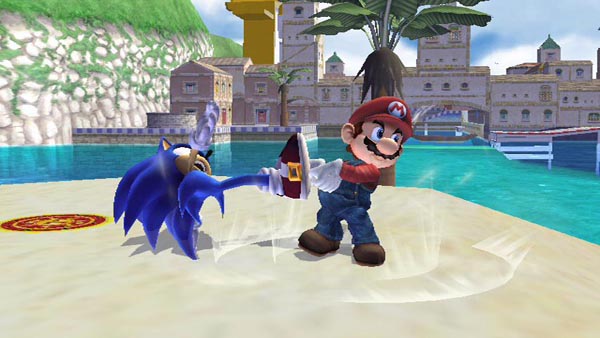
Settle old rivalries with friends online
All the Little Things
One of the appeals of Super Smash Bros. is all the fun junk that gets crammed into it. As I mentioned above, the game types from Melee are intact; Events, Home Run Contest, Training, Multi-Man, all with cooperative two player mode added. In addition to these there is now an adventure mode called the Subspace Emissary (SSE).
The SSE is a little difficult to describe, but it?s something of a cross between a platformer, a brawler, and Super Smash Bros. This mode pits players against little weenies and gigantic bosses in side-scrolling levels with the focus on action, but exploration encouraged. SSE can be played with a friend, and I highly recommend it because otherwise it gets a little boring. There isn?t a plot proper, but rather the story plays out as a patchwork of cutscenes with only the vaguest of connections to one another. Even the introduction of the final boss is completely free of any narrative constraints. As silly as each cutscene is, I found that I was playing to see each of them more so than for any sense of satisfaction that I was getting by killing koopas and goombas with Metaknight and Diddy Kong. There is something both hilarious and heart-warming about seeing Pikachu running alongside Samus for reasons unknown.
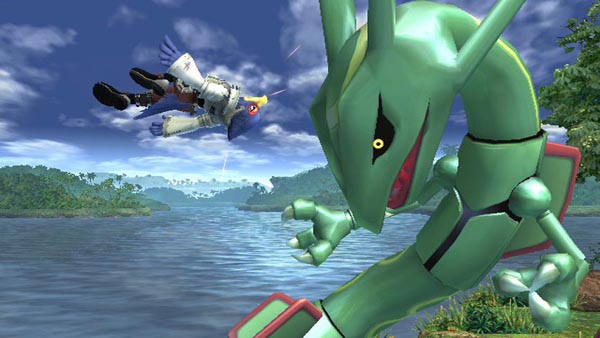
The boss battles help keep the Subspace Emissary interesting
Adding a layer of fake depth to the SSE are stickers which can be collected in nearly every mode of play. The stickers can be attached to the base of each character?s trophy and will buff that character?s stats. Since the SSE is not terribly difficult even on the harder settings, there is no reason to bother with this except for those that love stat managing. The real reason the stickers are around is to complement the pastiche theme of the game. And stickers aren?t all; we?ve also got the trophies again. And rather than a slot machine to unlock these extras, there is a more fun shoot ?em up styled arcade slot machine which uses the coins that are collected throughout the game. The sticker and trophy experience is entirely superfluous but fun.
There is also a wall of challenges devoted to taunting players with stages, music, trophies and stickers which can only be unlocked by meeting certain requirements. Some are easy and will be unlocked through normal play, some are difficult and will require a lot of determination to unlock, and some simply take a long time to unlock. The more difficult challenges unlock stickers and trophies so they can be ignored by players looking only to quickly unlock all the stages and music. The more compulsive players are free to bravely attempt clearing all of the challenges.
The most exciting new bonus feature of Brawl is the CD item. This is a random and very rare item drop that disappears very quickly. Each time one is collected, one of the hidden songs for one of the stages is unlocked. The frequency of how often the song plays on that stage can even be fine tuned in the My Music options menu. Considering how quickly I got sick of most of the Melee soundtrack, this is one of my favorite extras.
Brawl also introduces the option to change control schemes. It seems like such a simple addition, but it really helps the game realize its full potential. Several control configurations are available: GCN controller, classic controller, Wii remote (sideways), or Wii remote with Nunchuck. Not only that, the button arrangement for each control scheme can be configured independently. Controller configurations are tied to player profiles so every player can setup their own. I?ve made some very helpful changes to my classic controller layout and I?ll never be able to go back to default controls on the GCN controller.
The Vault section of the game contains other features I haven?t discussed for the sake of brevity, but I will briefly mention that Brawl allows players to save screenshots and match replays, look at a chronicle of every Nintendo video game released for every system, and even play demos of the classics whose protagonists are featured in the game. But for someone only interested in Brawl the fighting game, these extra features, SSE, stickers, control options, match replays, all can be easily ignored without missing a beat. The hidden characters will be unlocked simply by playing versus matches.
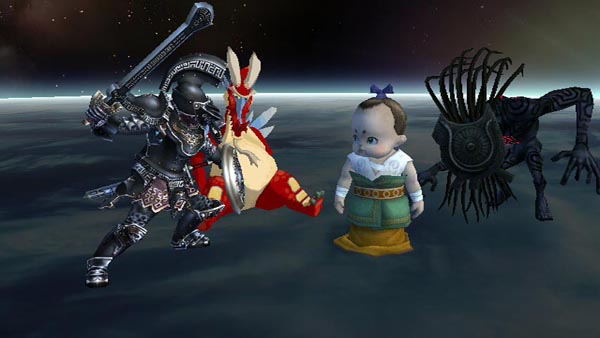
Arranging screenshots of trophies is a fun distraction
The Brawl Experience
Brawl has quickly become my favorite fighting game, and one of my favorite video games. Its combination of accessibility and depth of technique as well as its versatility in varying from a strict fighting game to an all-out party game makes it fun whether I?m playing against a single competitive opponent or three of my friends. The diversity of the characters ensures that while I have a favorite character (Olimar in case anyone is wondering), I have just as much fun playing any of the other characters, and because I don?t have to keep learning ridiculous input sequences for each character?s move-set, I am free to experiment with characters I am less familiar with.
The lower gravity, larger edge sweet-spot, and new characters come together to put the focus of the battle into the air. Chasing opponents off the edge to land an aerial hit before grabbing onto the ledge to prevent them from recovering with their up b technique is a thrilling experience even newcomers can appreciate and is no longer a rare, high-level play occurrence. Although Brawl feels a bit slower than Melee due to the change in gravity, it ends up being more exciting for it.
The near perfection of Brawl means its faults stand out all the more. Tripping does not have an on/off option (without a doubt the biggest fault), some characters have been unnecessarily weakened, the online component is weak, there is no option to use the directional pad instead of the analog stick (except when using the Wii remote sideways), and replays of matches longer than three minutes cannot be saved. Considering how complex the fighting system is and how much optional content has been stuffed into the game, it does well to make out with so few and so unobtrusive faults. When all is considered, the game is overwhelmingly positive.
Brawl is an amazing fighting game, it is a satisfying single or co-op brawler, it is an exceptional party game, and it is a silly and fun tour of the Nintendo universe. It excels at each of these facets individually and combines them seamlessly into a single experience that stands out even among the history of amazing Nintendo games featured within the game.
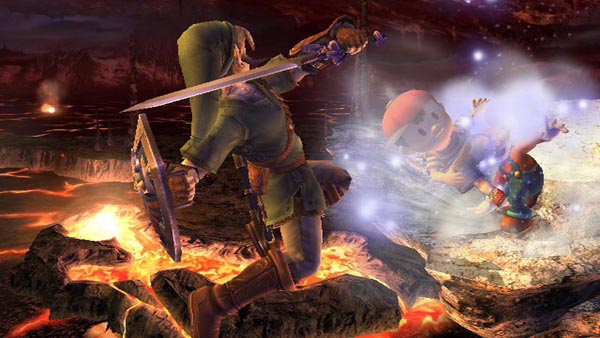
Epic battles are commonplace this time around
